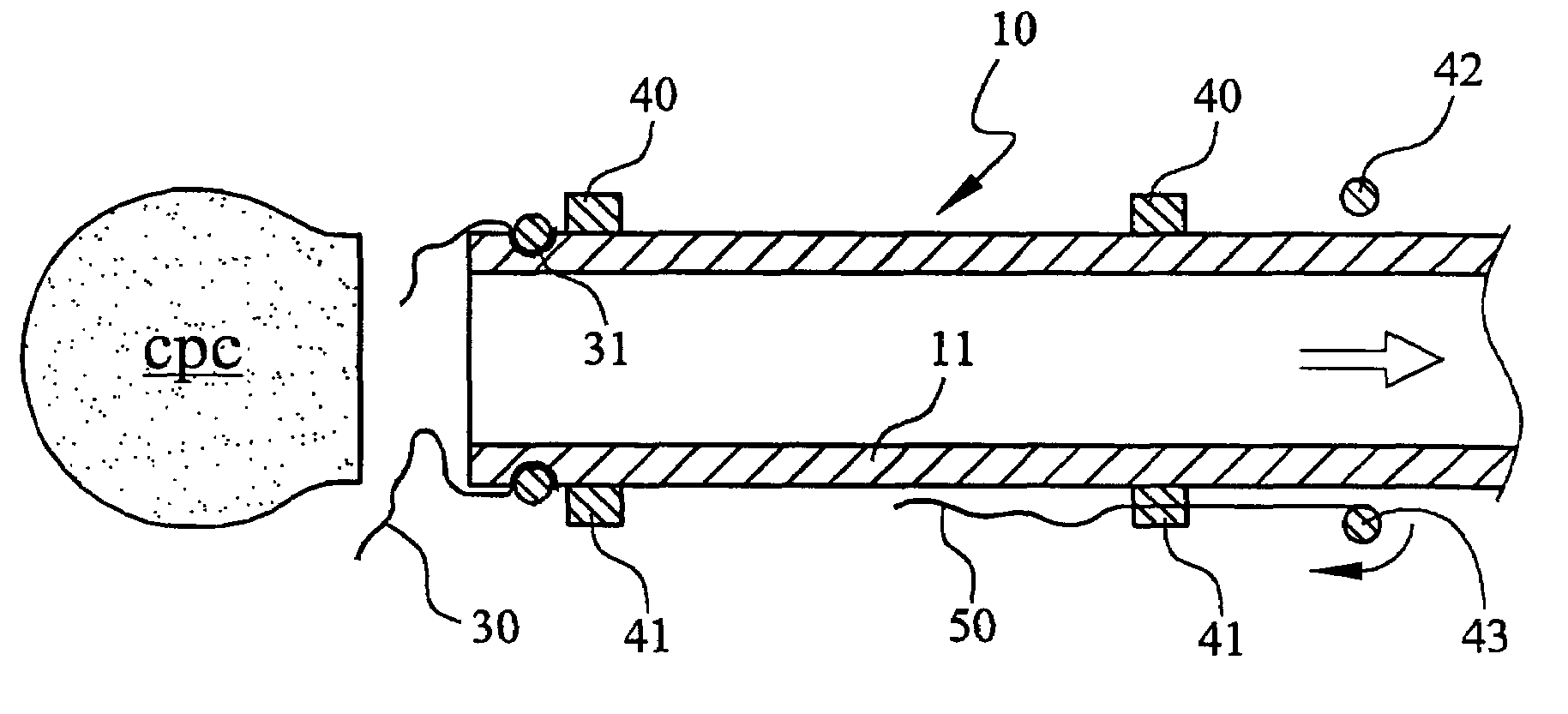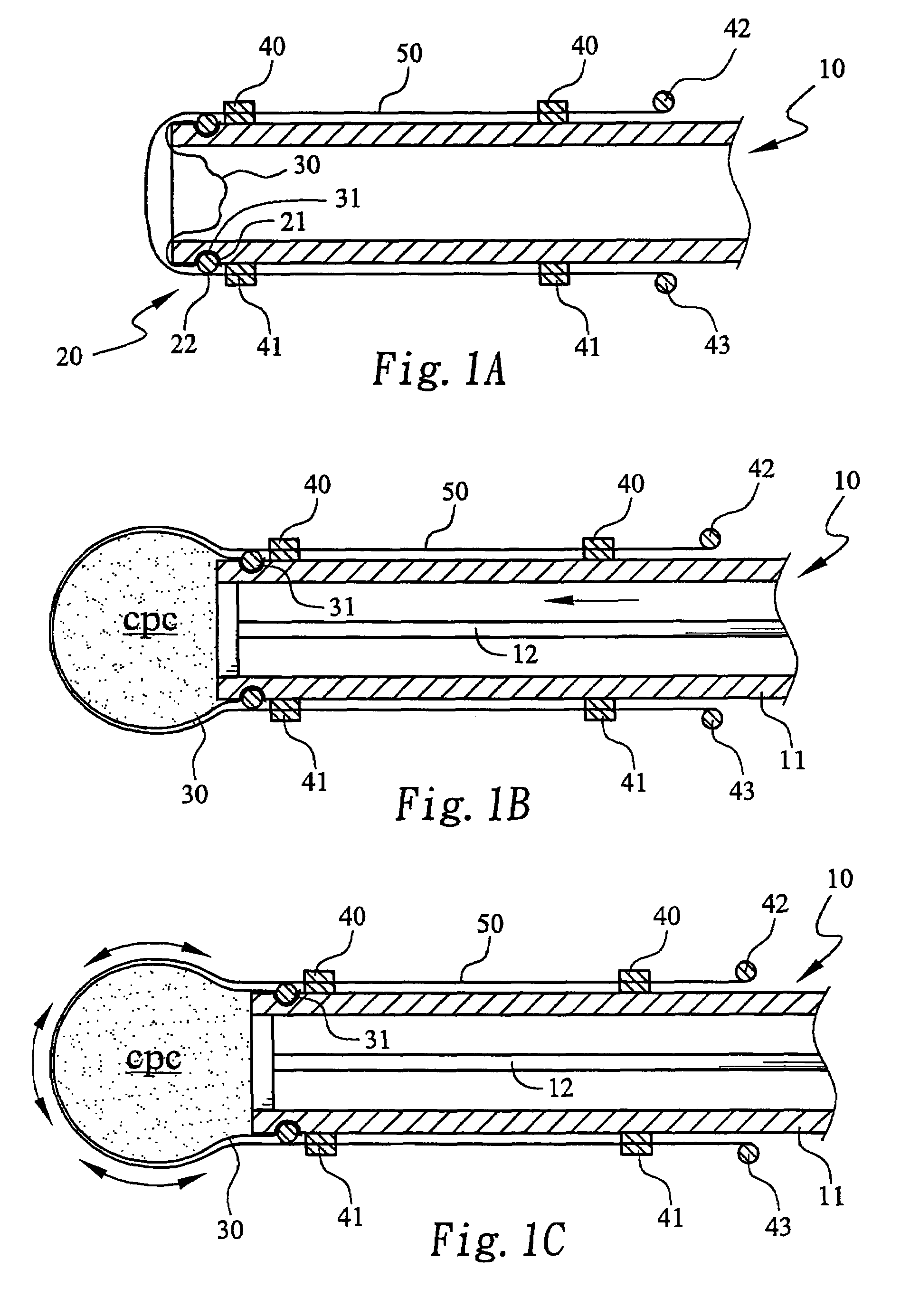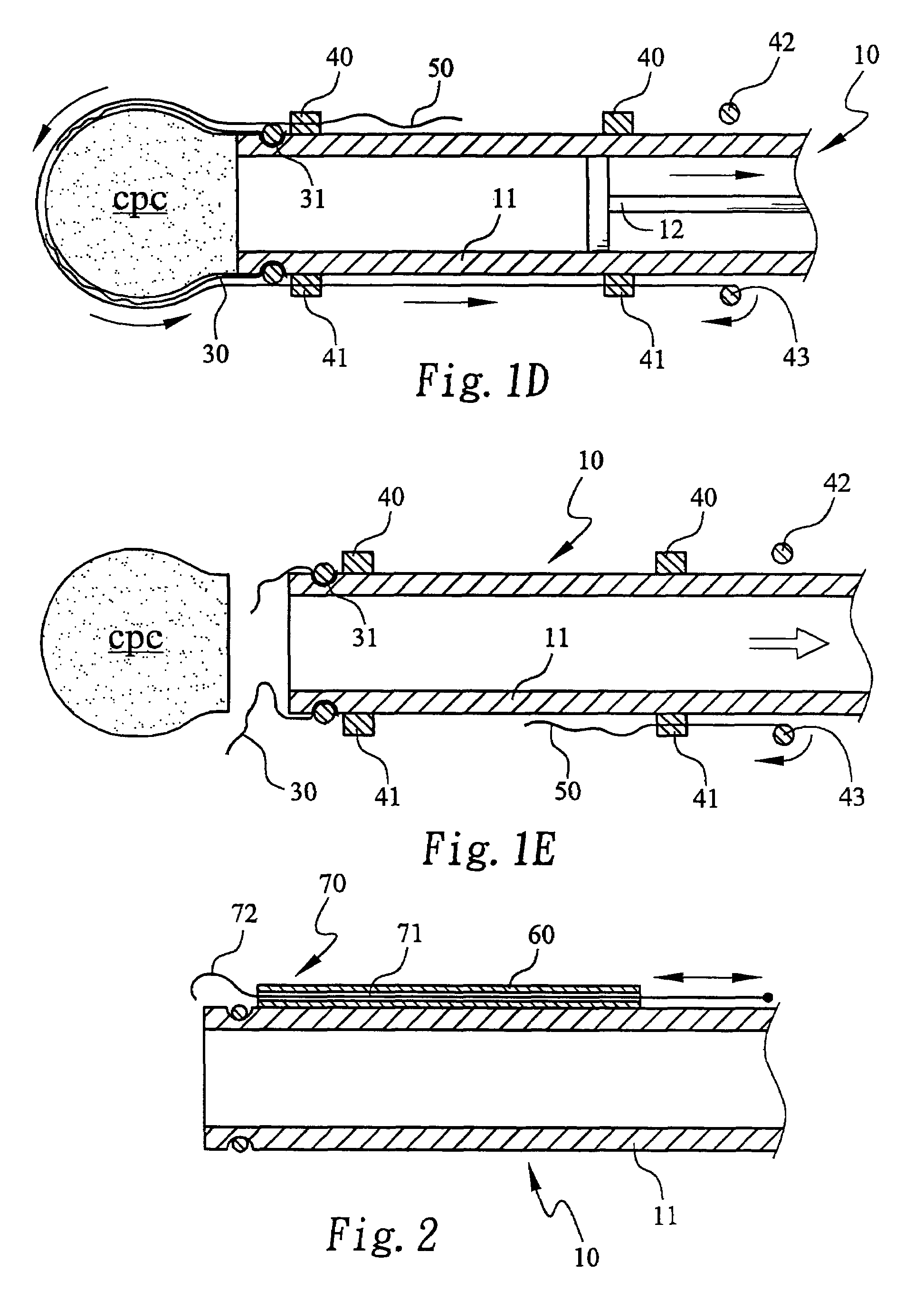Method for forming a hardened cement in a bone cavity
a technology of hardened cement and bone cavity, which is applied in the field of forming a set or hardened bone cement in the bone cavity, can solve the problems of serious hazard, easy dispersion/disintegration of cement, etc., and achieve the effect of reducing the risk of cement dispersion/disintegration, and increasing the strength of cemen
- Summary
- Abstract
- Description
- Claims
- Application Information
AI Technical Summary
Benefits of technology
Problems solved by technology
Method used
Image
Examples
example
[0037]To a setting solution of 1M phosphoric acid solution (pH=5.89) the ND-CPC powder from PREPARATIVE EXAMPLE was added in a liquid / powder ratio (L / P ratio) of 0.4, i.e. 4 ml liquid / 10 g powder, while stirring. The resulting paste was filled into a cylindrical steel mold having a length of 12 mm and a diameter of 6 mm, and was compressed with a gradually increased pressure until a maximum pressure was reached. The maximum pressure was maintained for one minute, and then the compressed CPC block was removed from the mold. At the 15th minute following the mixing of the liquid and powder, the compressed CPC block was immersed in a Hanks' solution for 1 day.
[0038]The CPC paste in the mold was compressed with a maximum pressure listed in Table 1. In the course of the compression the compression speeds were about 5 mm / min during 0˜104.1 MPa; 3 mm / min during 104.1˜138.8 MPa; 1 mm / min during 138.8˜159.6 MPa: and 0.5 mm / min during 159.6˜166.6 MPa. The liquid leaked from the mold during com...
PUM
 Login to View More
Login to View More Abstract
Description
Claims
Application Information
 Login to View More
Login to View More - R&D
- Intellectual Property
- Life Sciences
- Materials
- Tech Scout
- Unparalleled Data Quality
- Higher Quality Content
- 60% Fewer Hallucinations
Browse by: Latest US Patents, China's latest patents, Technical Efficacy Thesaurus, Application Domain, Technology Topic, Popular Technical Reports.
© 2025 PatSnap. All rights reserved.Legal|Privacy policy|Modern Slavery Act Transparency Statement|Sitemap|About US| Contact US: help@patsnap.com



